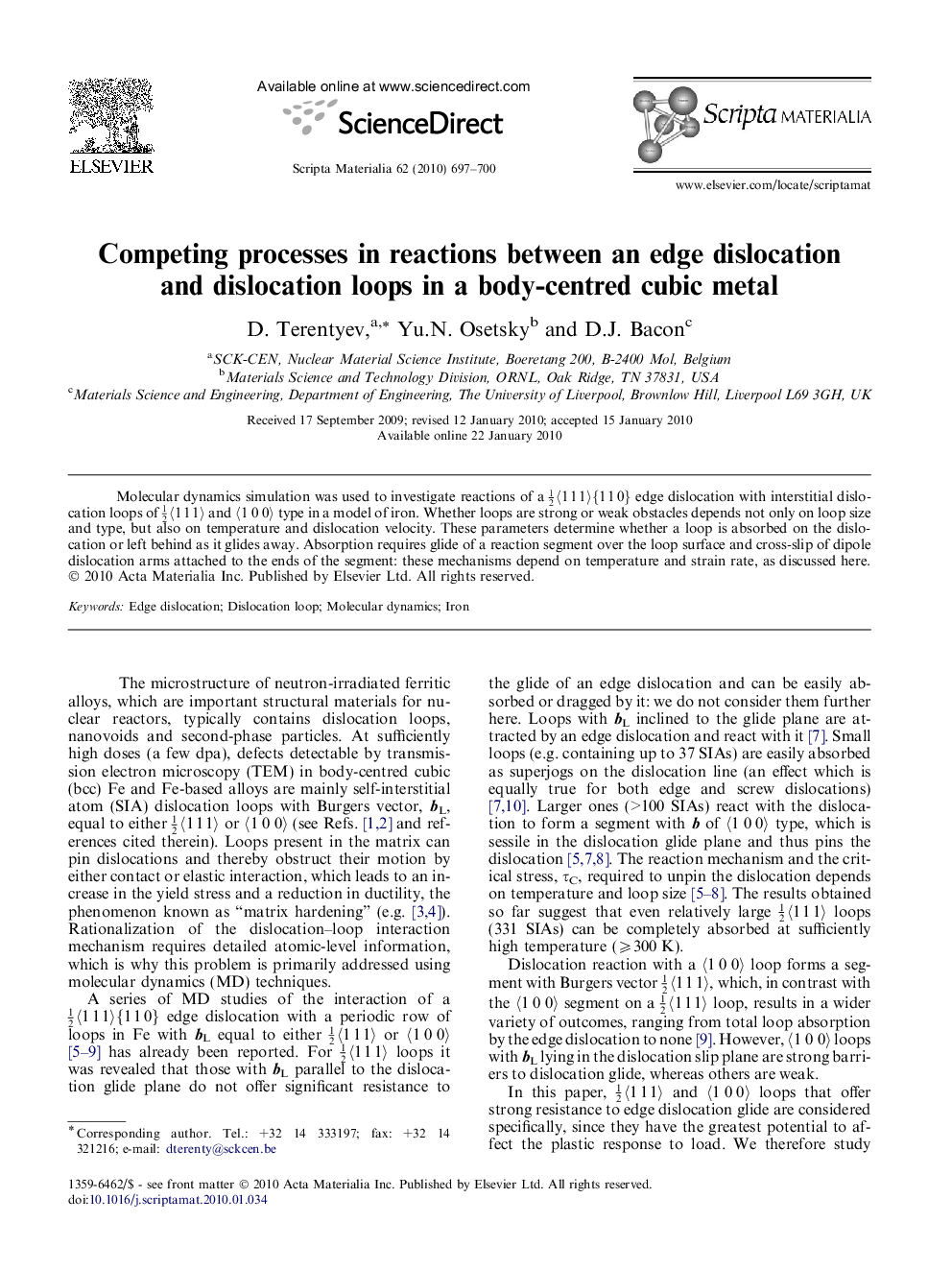| Article ID | Journal | Published Year | Pages | File Type |
|---|---|---|---|---|
| 1501171 | Scripta Materialia | 2010 | 4 Pages |
Abstract
Molecular dynamics simulation was used to investigate reactions of a 12〈111〉{110} edge dislocation with interstitial dislocation loops of 12〈111〉 and 〈1 0 0〉 type in a model of iron. Whether loops are strong or weak obstacles depends not only on loop size and type, but also on temperature and dislocation velocity. These parameters determine whether a loop is absorbed on the dislocation or left behind as it glides away. Absorption requires glide of a reaction segment over the loop surface and cross-slip of dipole dislocation arms attached to the ends of the segment: these mechanisms depend on temperature and strain rate, as discussed here.
Related Topics
Physical Sciences and Engineering
Materials Science
Ceramics and Composites
Authors
D. Terentyev, Yu.N. Osetsky, D.J. Bacon,
